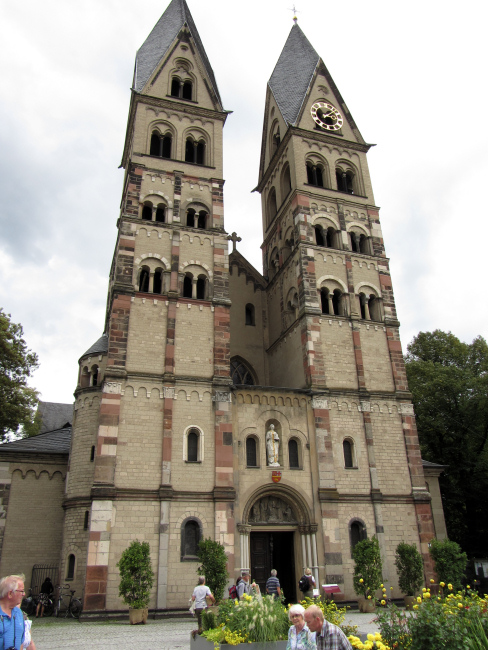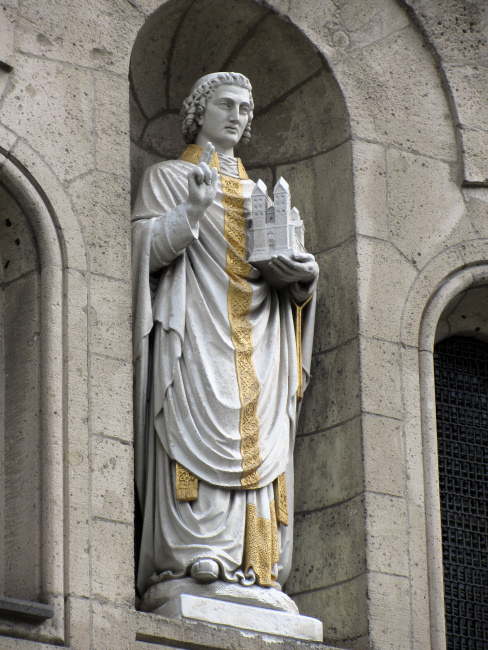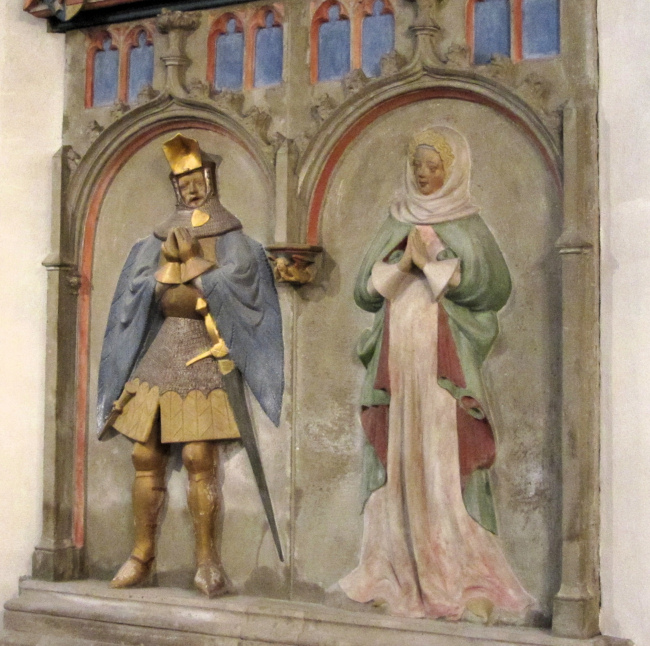
Around the corner from the Deutsches Eck in Koblenz is a church that has stood, more or less (in spite of being renovated, bombed, and shot at) for the last twelve hundred years. This is the beautiful Kastorkirche, the Basilica of St. Castor of Karden.
How can you tell it’s St. Castor’s Basilica? Because there’s a statue of St. Castor right over the door. And how can you tell he’s St. Castor? Because he’s holding a little copy of a church. Which church is he holding? As you can plainly see, it’s the Basilica of St. Castor. The same church which is currently holding him!

Saints in art usually carry or stand next to something that’s associated with them, a kind of shorthand that Catholics know. But St. Castor of Karden’s life doesn’t lend itself easily to iconography. He was a holy hermit by the Mosel River in the 4th century who brought the Christian faith to the Rhineland-Palatinate region. But it’s hard to make a statue out of that.
No, when it comes down to it, what St. Castor is famous for is the Basilica of St. Castor, so that’s what he always carries. Even when he’s part of the Basilica of St. Castor.
This sort of metaphysical circularity folded my gray matter like origami. Was there a little statue of St. Castor over the door of the church he was carrying? And did it, too, have its own tiny copy of the church? I imagined a series of matryoshka nesting churches getting smaller and smaller, each with their own statue-cum-church. Meanwhile, I couldn’t help looking for a great pair of hands to reach down from the heavens and cradle the ancient basilica.
Those hands are there, I’m sure. But it would take better eyes than mine to see them.
Inside, I met this delightful couple: Friedrich von Sachsenhausen and his wife, Sophie Schenk von Liebenstein, from the early 1400s.

Photographs taken September, 2011, in Koblenz, Germany. Text copyright 2011 Clare B. Dunkle. Photos copyright 2011 Joseph R. Dunkle.

How wonderful to see a Lady, and her husband, carrying the same name as I!